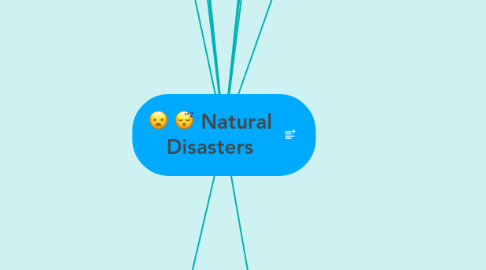
1. 90 percent of darwin was deystroyed in 1987
2. Fresh water is our most precious resource if it would been dried up we would have died from thirst.
3. A cyclone is a powerful whirlwind storm.It is also a system of winds rotating like a frisbee in the air.
4. Definition
4.1. A flood is like a big rising water overflows onto normally on dry land.
4.2. after a few day the water it normally dry out after
5. Rainfall is low and irregular.
6. Floods
6.1. Causes
6.1.1. Their most commonly formed by heavy rain. But not always causes by heavy rain.
6.2. Effects
6.2.1. could wipe out crops. witch could make our resources low and the prices increase.
6.3. Example
6.3.1. Darwin has had 5 cyclones in 5 years.
6.3.2. In 2010 Queensland experienced a lot of floods and heavy rainfall. Later that year a cyclone called Tasha raced across Queensland as well.
6.4. Human Impact
7. Heatwaves
7.1. Causes
7.1.1. Climate change
7.1.1.1. Global warming
7.2. Effects
7.2.1. Longer hotter summers
7.3. Example
7.3.1. There have been many heatwaves in Australia, including the 1939 heatwave which killed 438 people in South Australia.
7.4. Definition
7.4.1. A heat wave is a long period of hot weather.
7.5. Human Impact
7.5.1. As the temperature rises, people can experience heat stress.
7.5.2. Effects human health
7.5.2.1. e
7.5.3. And it effects people because that get sweaty
7.5.4. You could get heat stroke which could kill you.
7.5.5. heat exhaustion, heat stroke, dehydration, heat rashes and swellings.
8. Earthquakes
8.1. Human Impact
8.1.1. LOTS OF PEOPLE DIE
8.2. Causes
8.2.1. people die
8.2.1.1. houses get recked
8.2.2. tectonic plates in the earth's surface rub together
8.3. Examples
9. Cyclones
9.1. Weakening may also occur if the cyclone moves into an unfavourable wind regime which disrupts the structure of the system. Sometimes a decaying tropical cyclone may interact with a weather system in higher latitudes to cause impacts far from the tropics.
9.2. Causes
9.2.1. The energy for cyclones comes from warm oceans.
9.2.2. Another way cyclones can form is that they need thunder storm and a
9.2.3. The surface temperature of the sea needs to be 26.5 degrees to start a cyclone
9.3. Effects
9.3.1. Slight damage to trees and crops on farms
9.3.2. Cyclones are categorised by their strength, 1 being the lowest and 5 being the highest.
9.3.3. Severe damage to signs
9.3.4. Some houses flatened
9.3.5. Power failure
9.3.6. Roofs on houses
9.4. Minor house damage
9.5. Examples
9.6. Definition
9.7. Human Impacts
9.7.1. You will have no money and no where to live.
9.7.2. Farms will be destroyed by the cyclone and you will have no food.
9.7.3. We can drown from cyclones because they make huge floods
9.7.4. Animals can die leaves us with less food and farmers crops get sucked up
10. Droughts
10.1. Causes
10.1.1. Australia is often affected by drought because of the change in rainfall pattern.
10.1.2. For most of countries our rainfall is very low and irregular.
10.1.2.1. So many scientist believe that this drought was caused by El Nino
10.1.2.1.1. .
10.2. Effects
10.2.1. There is less water for growing crops because of the drought
10.2.1.1. The Great Plains was heavily ploughed and planted by the Dust Bowl
10.3. Example
10.3.1. A drought is when there is not enough water to serve humans, animals and plants.
10.4. Definition
10.4.1. A drought is when there is not enough water.
10.4.1.1. El Nino is a weather condition that can wreck havoc.
10.5. Human Impact
10.5.1. There is less water.
10.5.2. Less food to feed people.
10.5.3. When there is a drought, there is less water available for growing crops, farming animals, industry and our cities.
